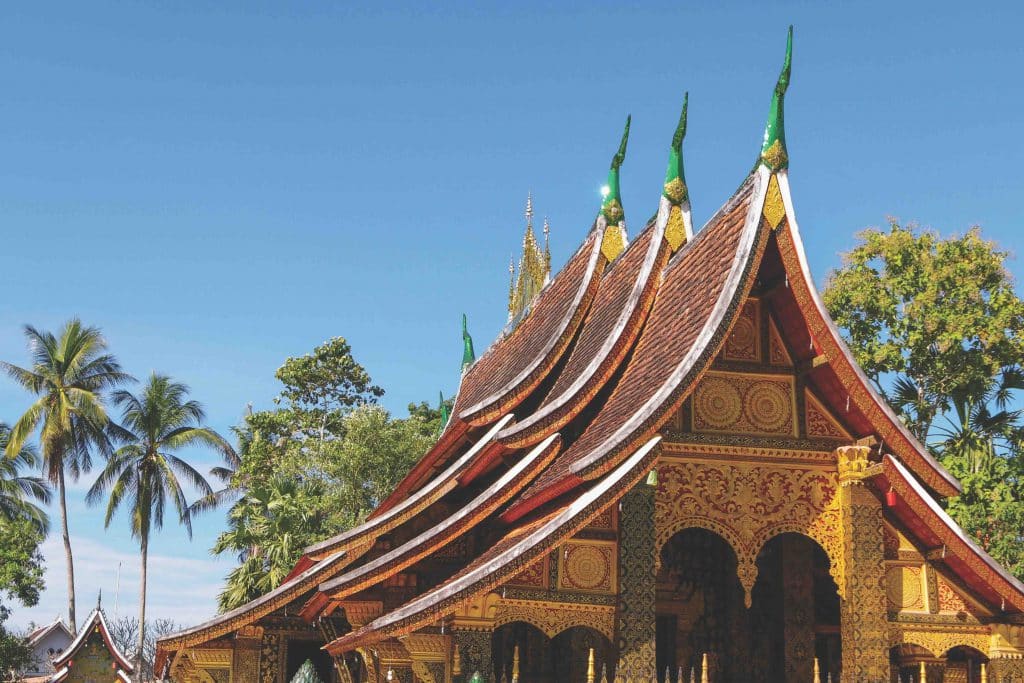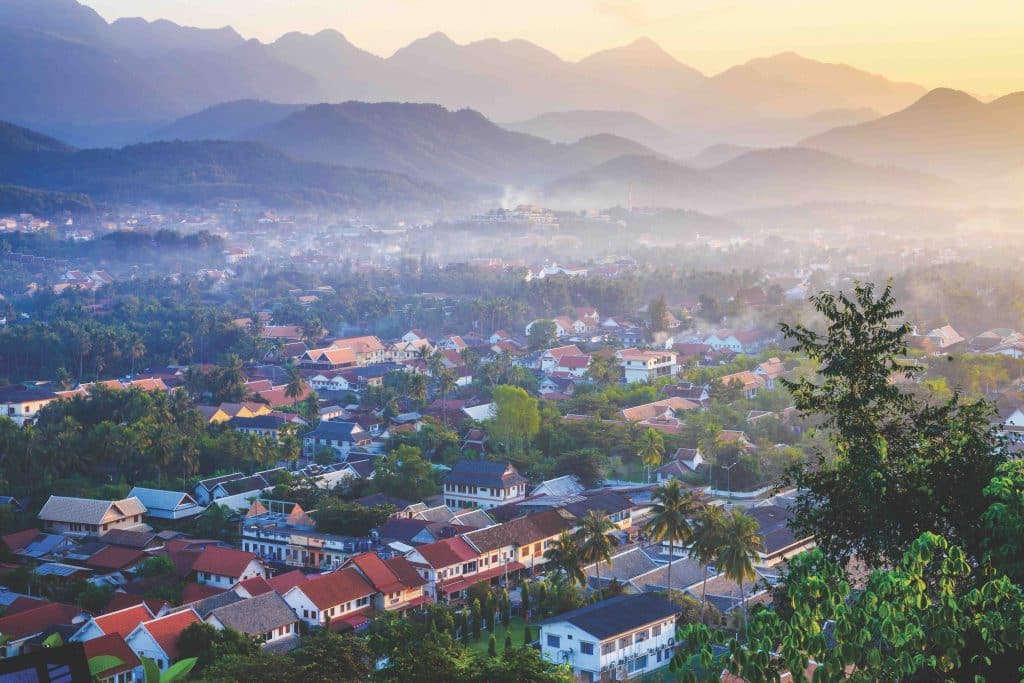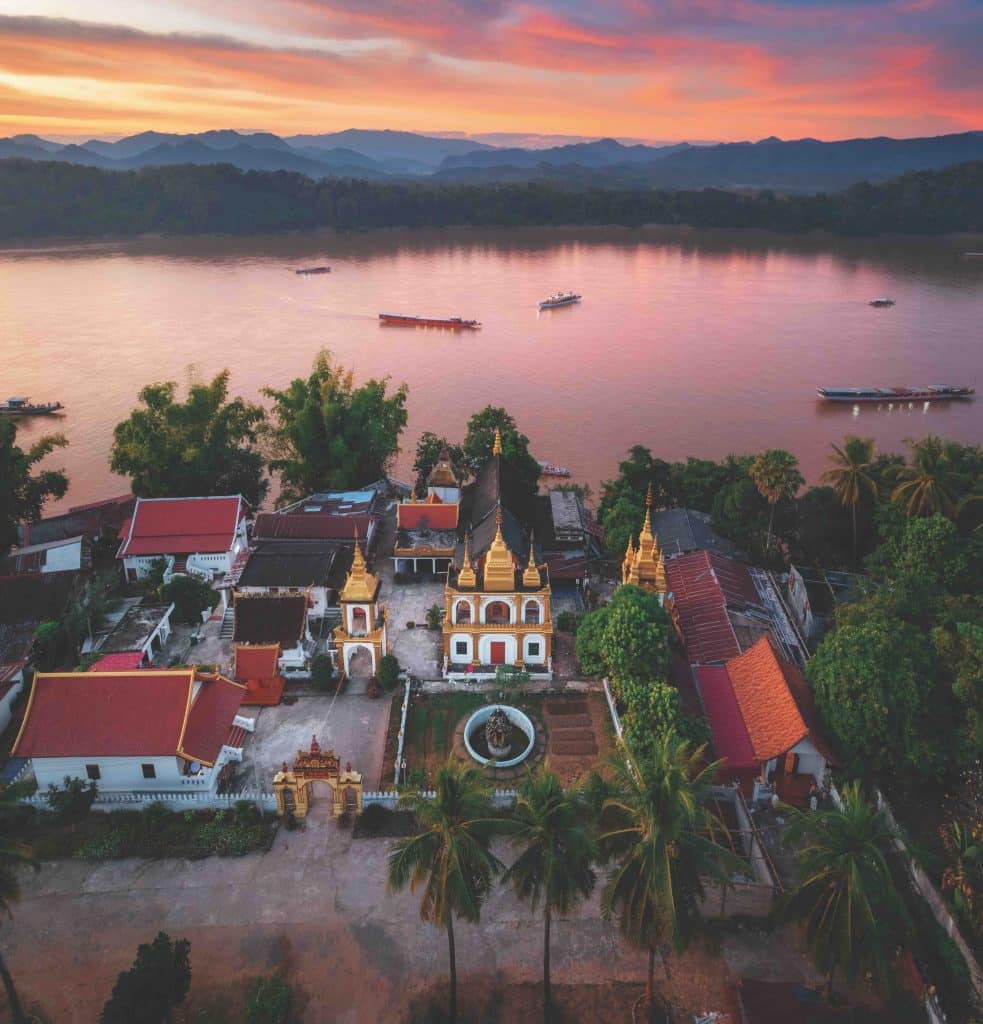Story & Photos Long Ho
Nestled in the lush greenery of northern Laos, Luang Prabang stands as a silent note in the bustling symphony of the modern world – a place where time seems to slow down, allowing you to breathe deeply and savor every moment.
Recognized as a UNESCO World Heritage Site in 1995, this former royal capital is a sublime fusion of Asian and European cultures and gentle nature. Luang Prabang does not greet visitors with blaring horns or dazzling lights, but with the subtle scent of incense drifting on the morning breeze, the echo of temple bells in the afternoon and the unhurried footsteps of locals, like a wordless song.

The city of tranquility
Once the capital of the Kingdom of Lan Xang, also known as the Land of a Million Elephants, Luang Prabang carries deep layers of cultural sediment from various historical periods. The city’s architecture stands out with rustic wooden houses interspersed with graceful two-story French colonial buildings featuring wide balconies and wooden shutters. Roadside cafés, cobblestone streets and more than 30 gilded temples scattered across the small peninsula create a peaceful, leisurely atmosphere.
Among them, Wat Xieng Thong – the oldest temple in Luang Prabang – boasts soaring, bird-like roofs adorned with exquisite gold-inlaid motifs on black lacquer, and walls carved with stories of daily life, Buddhist teachings and the land and people of Laos.
Not far away is the former Royal Palace, now the National Museum, a mirror reflecting the era of Lao – French cultural exchange. There, the sacred golden statue of Phra Bang Buddha quietly radiates under the blue sky, as if guarding the soul of the city through countless seasons of rain and sun.
Buddhism permeates every aspect of life here. A day in Luang Prabang begins with the Tak Bat (alms-giving ceremony) along the main streets. Hundreds of monks in saffron robes line up to receive rice and offerings from locals and visitors. This ritual is not only a duty for the monks but also a lesson in virtue and merit for the people. In that tranquil space, one can feel only reverence for the Buddha gently spreading in the early morning mist.

The gentle melody of earth and sky
Beyond its temples and history, Luang Prabang is blessed by nature with a soothing green cloak. The Mekong and Nam Khan rivers wind around the city, bringing fertile silt that has nourished generations. Each sunset, the sound of distant temple bells mingles with the river’s gentle flow.
To take in the panoramic view of the ancient capital, climb the 328 steps to the top of Mount Phousi for sunrise or sunset. From above, the old town unfolds like an ink wash painting: golden water reflecting temple roofs and rows of trees. In this place where rivers and mountains meet, you can quietly listen to the temple bells, the chanting, and the soft paddling of boats all blending into a sacred and gentle symphony.
Just 30 kilometers from the city, Kuang Si Waterfall appears like a crystal-clear dream, with turquoise water cascading over white limestone terraces, forming natural, transparent pools. Immersing yourself in the cool water washes away the dust of the bustling city, letting your soul find peace in the pristine space of the tropical forest.

The thread connecting tradition and modernity
In Luang Prabang, tradition and modernity breathe in harmony. Traditional craft villages still thrive alongside French-style cafés and modern shops and supermarkets.
In Ban Xang Khong and Ban Xieng Lek villages, Saa paper (similar to Vietnamese do paper) is still handmade using ancient methods from mulberry bark. The patient hands of artisans spread pulp onto mesh frames, waiting for the sun to dry it into soft, durable sheets. In the past, Saa paper was mainly used for copying Buddhist scriptures; today, artisans press flowers and leaves into the paper to create cards, lanterns, and notebooks – perfect as small gifts imbued with local tradition.
Besides Saa paper making, Luang Prabang is also known for hand-weaving at Ock Pop Tok and pottery in Ban Chan village, where rustic ceramics are crafted from Mekong river clay. Here, memories are preserved not through photos, but through human hands.
When night falls, Luang Prabang’s night market glows with the colors of souvenirs and handwoven textiles, mingling with the aroma of food stalls serving Larb, Khao Piak Sen soup, and even modern European dishes. Yet, above all, the atmosphere remains unhurried and relaxed, just like the city’s own pace of life.
Luang Prabang does not rush to hold anyone back, nor does it loudly beckon. This small city quietly endures, like a sutra chanted every morning, so that anyone who passes through feels their heart soothed, their soul cleansed and learns to cherish every moment of life. Amidst a world in constant motion, Luang Prabang maintains its slow, balanced rhythm, close to nature and steadfast in preserving the traditional values of the ancient capital.










